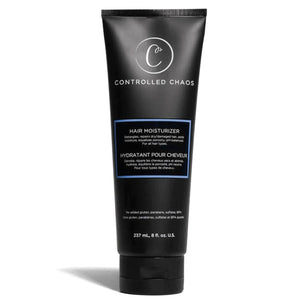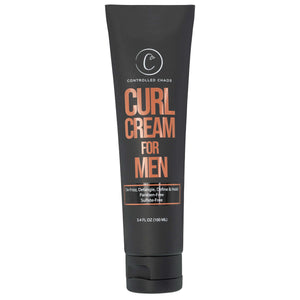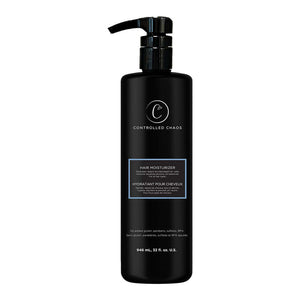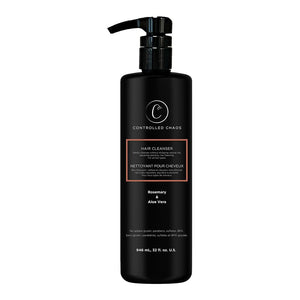

In the realm of curly hair care, one crucial aspect that often takes center stage is the practice of embracing protective styles. These hairstyles not only exude elegance. This article delves into curly hair protection by exploring five easy-to-achieve. By understanding the significance of these styles, curly-haired individuals can learn to embrace their natural texture. Discovering the beauty and potential of these five protective styles for curly hair.
Protective styles and their role in maintaining healthy curls
Curly hair possesses a unique beauty that captivates with its voluminous texture and natural bounce. However, it also demands special care and attention to keep it healthy and vibrant. This is where protective styles come into play. Hairstyles for 4c hair can be defined as hairstyles that shield the ends of the hair from external stressors. These styles create a protective barrier by tucking away the ends and minimizing exposure.
Maintaining healthy curls through protective styles is not just a matter of aesthetics; it's a crucial aspect of overall hair care. Curly hair is typically more sensitive and prone to damage than straight hair. Thus, adopting protective hairstyles can significantly reduce hair damage and promote growth.

Exploring the various types of protective hairstyles
Protective styles for curly hair encompass diverse creative and stunning options. Each type of protective style serves a specific purpose and caters to various hair lengths and textures. Let's explore the step-by-step process of achieving each style and the potential variations.
Braided Styles for Curly Hair Protection
Braided hairstyles have been a timeless go-to choice for curly-haired individuals. These intricate designs not only enhance the natural beauty of curly hair but also offer numerous benefits for its overall health.
While braids offer numerous advantages, there are also some considerations to consider. To avoid this, it is essential to ensure that the braids are tight enough.
Popular Braid Styles:
BoxBraid:
Steps to make box braids:
- Start with clean and dry hair. Use a wide-tooth comb to detangle your hair, ensuring it's free of knots and tangles.
- Create neat and even partings using the wide-tooth comb. For box braids, you can make small to medium-sized sections. Use hair ties or rubber bands to secure the sections you are not working on.
- Cross the right section over the middle section, then the left section over the middle section. It will help to create the first braid stitch.
- Keep braiding until you reach the end of your hair. Always leave a small amount of natural hair at the bottom without extensions. Secure the back with a hair tie or rubber band.
- Repeat steps 3 to 6 for each section of your hair. It is good to start creating box braids all over your head. Take your time to ensure each braid is neat and secure.
Cornrows:
- Use a wide-tooth comb to create neat and even partings. You'll create rows of braids close to the scalp for cornrows. You can make straight lines or more intricate patterns, depending on your preference.
- Take a small section of hair from the front of your head at the hairline. Divide it into three equal parts to start the braid.
- Cross the right section over the middle section, then the left section over the middle section. As you continue braiding, add small sections of hair from the row. This is similar to French braiding but with smaller sections.
- Keep adding hair and braiding tightly along the scalp until you reach the nape of your neck or the desired stopping point. The cornrow should be snug but not too tight to avoid discomfort.
- Once you reach the end of the braid, continue with a regular three-strand braid.
- Repeat steps 3 to 6 for each cornrow you want to create on your head.
Braided Styles for Curly Hair Protection
Braided hairstyles have been a timeless go-to choice for curly-haired individuals seeking adequate protection and styling versatility. These intricate designs not only enhance the natural beauty of curly hair.
One of the primary advantages of braids is their ability to shield the hair from external elements. By weaving the hair into tight, organized patterns, braids reduce friction, tangles, and exposure to environmental stressors. Additionally, braids help retain moisture within the hair strands, preventing dryness and promoting hair health.
Another benefit of braided styles is their longevity. Once braided, the hair can stay in place for several days or weeks with proper care, reducing the need for frequent manipulation and styling. This prolonged protection encourages hair growth and prevents constant handling, which can lead to breakage.
While braids offer numerous advantages, there are also some considerations to consider. Too tight or heavy braids may cause tension on the scalp. Braids help to remove all the tension in your scalp.
Twist Styles for Curly Hair Protection
Twist hairstyles have long been favored by individuals with curly hair. They can provide excellent protection and showcase the beauty of natural curls. These versatile and stylish protective hairstyles for 3c hair offer various benefits.
Popular Protective Twist Styles for Curly Hair
Here are some easy protective styles for 3b hair: You can follow these steps to make this hair.
Two-Strand Twists:
- Start with clean and dry hair. Use a wide-tooth comb to detangle your hair.
- Create neat and even partings to divide your hair into sections. You can make small to medium-sized areas.
- Apply a hair moisturizer or leave-in conditioner to each section of hair.
- Take one section of hair and split it into two equal strands. Hold one strand in each hand, making sure they are even.
- Cross the right strand over the left strand, swapping their positions. The strand initially on the right will be on the left, and vice versa.
- After the initial crossover, separate the two strands and start twisting them around each other in the same direction.
- As you twist, make sure to keep the tension even and consistent.
- Continue twisting to the ends of your hair. You can secure the ends with a small hairband if your hair is longer.
- Start with clean and dry hair. Use a wide-tooth comb to detangle your hair, ensuring it's free of knots and tangles.
- Create neat and even partings to divide your hair into sections. Flat twists work best with smaller sections.
- Apply a hair moisturizer or leave-in conditioner to each section of hair.
- Take a small section of hair from the front or side of your head near the hairline. Divide this section into two equal parts.
- Take a small section of hair from the following area adjacent to the twist.
- As you continue to twist, add hair from each new section.
- Once you reach the end of the flat twist, you can secure it with a bobby pin.
- Repeat steps 4 to 7 for each section of your hair until you've completed flat twists all over your head.
Low Manipulation Styles for Minimal Hair Handling
Here are some of the minimal protective hairstyles for curly hair growth.
Low manipulation styles are an excellent option for individuals with curly hair who prefer minimal handling of their tresses. These styles involve gentle and straightforward techniques that reduce the risk of breakage.
Pineapple Updo:
- Gather all your hair at the crown of your head as if you were making a high ponytail.
- Secure your hair with a hair tie or a scrunchie. Ensure not to pull the hair too tight to avoid tension on your edges.
- If you have bangs or shorter layers, you can leave them out to frame your face.
- Fluff and adjust your hair on top to create the "pineapple" shape.
- You can use your fingers or a pick comb to lift and separate the curls at the top gently.
- Consider using a silk scarf or a satin bonnet when sleeping to preserve the curls and prevent frizz.
Puffs and Buns:
- Begin with clean and dry hair. You can add some hair gel or styling cream to make your hair easier to work with.
- Pull your hair back into a high or low ponytail.
- Take the ponytail and twist it around the base to form the bun shape. Keep the twist tight to create a sleek bun or loose for a more relaxed look.
- Use bobby pins or hair pins to secure the bun in place. Make sure the pins are hidden and the bun feels secure.
- For a fuller look, gently pull and fluff the bun to add volume and texture.
- As with the puff, you can use edge control or hair gel to style. Always tame your edges for a neat finish.
Overnight Protective Styles for Preserving Curls While Sleeping
Here are some of the protective hairstyles for sleeping:
Maintaining curly hair's shape and preventing frizz during sleep can be challenging. Overnight protective styles are designed to safeguard the curls. Moreover, it ensures they remain intact and well-defined until morning.
- Satin or Silk Bonnet: Wearing a satin or silk bonnet to bed is a classic and effective way to protect curly hair. These soft materials reduce friction against the hair, prevent tangling, and retain moisture.
- Pineapple Updo: As previously explained, the pineapple updo is suitable for daytime and an excellent overnight style to maintain the curls' volume and shape.
- Satin or Silk Pillowcases: If wearing a bonnet isn't preferred, using satin or silk pillowcases can also be beneficial. These smooth fabrics create less friction than cotton pillowcases. Moreover, it will help to preserve curls and reduce hair damage while sleeping.
Factors to Consider when Choosing Protective Styles
Hair Length and Desired Level of Protection
The length of one's hair is a crucial factor when selecting a protective style. Some styles may be better suited for shorter hair, while others are more appropriate for longer hair. Additionally, individuals with shorter hair might need to focus on protecting the ends, while those with longer hair may require full-length protection.
Scalp Health and Sensitivity
The health of the scalp should be considered when choosing a protective style. Styles that are too tight or involve heavy extensions may cause discomfort or exacerbate scalp issues. Opting for techniques allowing the scalp to breathe and maintain health is essential.
Lifestyle and Activity Level
Consider how the chosen protective style fits with your lifestyle and daily activities. If you lead an active lifestyle or engage in sports or exercise regularly, a technique that stays put and requires minimal maintenance would be more practical.
Conclusion
In conclusion, five protective styles for curly hair are essential in curly hair care. These hairstyles are powerful for maintaining healthy, vibrant, and beautiful curls. These styles reduce damage, breakage, and dryness by creating a protective barrier against external stressors like friction and weather. Moreover, it will promote overall hair health and growth. Additionally, protective styles offer low-maintenance options. It will allow individuals to showcase their natural curls while safeguarding them from daily struggles.
With a wide array of protective styles, individuals with curly hair can explore different options and find the styles that best suit their needs and preferences.
Frequently asked questions
Are protective styles good for curly hair?
Protective styles are excellent for curly hair as they help minimize damage, reduce breakage, and maintain its natural health and texture.
What style suits curly hair?
Curly hair can be styled in protective braids, twists, buns, and updos, providing protection and accentuating natural beauty.
How do braids protect curly hair?
Braids protect curly hair by minimizing friction, preventing tangles, and sealing in moisture, promoting overall hair health and preventing damage.
How can I style my curly hair without ruining it?
Style curly hair without ruining it using gentle techniques, avoiding excessive heat, using nourishing products, and embracing low manipulation styles.
How to protect curly hair at night?
Protect curly hair at night by wearing a satin or silk bonnet, using satin or silk pillowcases, or styling in a loose pineapple updo to preserve curls and prevent frizz while sleeping.





















